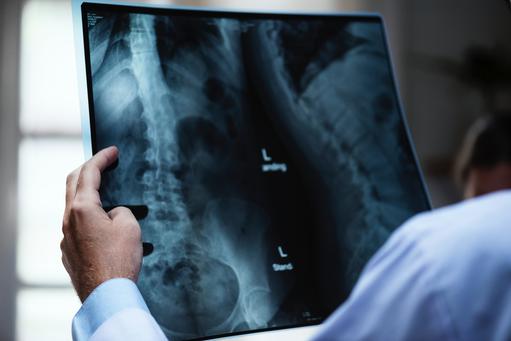Tag
Tagged: additive manufacturing
Directory:
Tags:

- People are living longer, the prevalence of age-related degenerative disc disease is increasing and sufferers are more and more turning to spinal implant surgery as a solution
- As this significantly raises the burden on over-stretched healthcare systems, so is spine surgery increasingly becoming a key target for cost reduction within healthcare systems
- This intensifies the pressure on manufacturers to innovate and make spinal implants more cost effective
Can 3D printing and the use of new alloys reduce the high costs of producing and marketing spinal implants?
On January 8th 2019 surgeons at Joseph Spine, a specialist surgery centre based in Tampa Bay Florida, were the first in the US to implant a 3D printed interbody fusion device, which was produced by Osseus Fusion Systems. The company uses its proprietary 3D printing technology, also known as additive manufacturing, to build spinal implants from titanium material that is optimized for bone fusion and biological fixation. In August 2018, a suite of Osseus’s devices received clearance from the US Food and Drug Administration (FDA) for a range of heights and lordotic (inward spinal curvature) angles, which make them adaptable for a variety of patient anatomies. The interbody fusion devices work by being packed with biomaterials and bone grafts and inserted in between two vertebrae, where they fuse with the spine and work to prevent back pain.
In this Commentary
This Commentary explores whether 3D printing and the use of new alloys could be an appropriate strategy to help spine companies reduce their production and sales costs and enhance their market positions. Our suggestions here complement a strategy, described in a previous Commentary, for MedTech companies to develop and implement digital strategies to enhance their go-to-market activities, strengthen the value propositions of products and services and streamline internal processes. The reasons spine companies might consider both strategies are because spinal implant markets, which are segmented by type of surgery, product and geography, are experiencing significant competitive, regulatory, pricing and technological challenges as well as mounting consumer pressure for improved outcomes; and the business model, which served as an accelerator of their financial success over the past decade is unlikely to be effective over the next decade.
3D printing
3D printing is a process, which creates a three-dimensional (3D) object by building successive layers of raw material. Each new layer is attached to the previous one until the object is complete. In the healthcare industry, 3D printing is used in a wide range of applications, such as producing dental crowns and bridges; developing prototypes; and manufacturing surgical guides and hearing aid devices. Increasingly, 3D printing is being used for the production of spinal implants.
Spine surgery increasing significantly
An estimated US$90bn is spent each year in the US on the diagnosis and management of low back pain (LBP). LBP, caused by age related degenerative disc disease, is one of the most common and widespread public health challenges facing the industrialized world. It is estimated that the condition affects over 80% of the global population and inflicts a heavy and escalating burden on healthcare systems. Also, LBP affects economies more generally in terms of lost production due to absenteeism, early retirement and the psychosocial impact caused by the withdrawal of otherwise active people from their daily activities. According to the American Association of Neurological Surgeons, more than 65m Americans suffer from LBP annually and the Chicago Institute of Neurosurgery and Neuroresearch suggests that by the age of fifty, 85% of the US population is likely to show evidence of disc degeneration. It is estimated that 10% of all cases of LBP will develop chronic back pain, which is one of the main reasons for people to seek surgical solutions and this significantly raises the burden on over-stretched healthcare systems.
Findings of a study published in the March 2019 edition of Spine, entitled, “Trends in Lumbar Fusion Procedure Rates and Associated Hospital Costs for Degenerative Spinal Diseases in the United States 2004 to 2015”, report that the rate of elective lumbar fusion surgeries in the US has increased substantially over the past decade. Such trends are indicative of most advanced industrial societies, which are changing and ageing, primarily driven by improvements in life expectancy and by a decrease in fertility. This results in people living longer, reaching older ages and having fewer children later in life. Over the next decade, these market drivers are expected to make spine surgery a key target for cost reduction within healthcare systems and this, in turn, is likely to increase pressure on manufacturers of spinal implants to make spine surgery more cost effective.
Findings of a study published in the March 2019 edition of Spine, entitled, “Trends in Lumbar Fusion Procedure Rates and Associated Hospital Costs for Degenerative Spinal Diseases in the United States 2004 to 2015”, report that the rate of elective lumbar fusion surgeries in the US has increased substantially over the past decade. Such trends are indicative of most advanced industrial societies, which are changing and ageing, primarily driven by improvements in life expectancy and by a decrease in fertility. This results in people living longer, reaching older ages and having fewer children later in life. Over the next decade, these market drivers are expected to make spine surgery a key target for cost reduction within healthcare systems and this, in turn, is likely to increase pressure on manufacturers of spinal implants to make spine surgery more cost effective.
|
|
|
|





